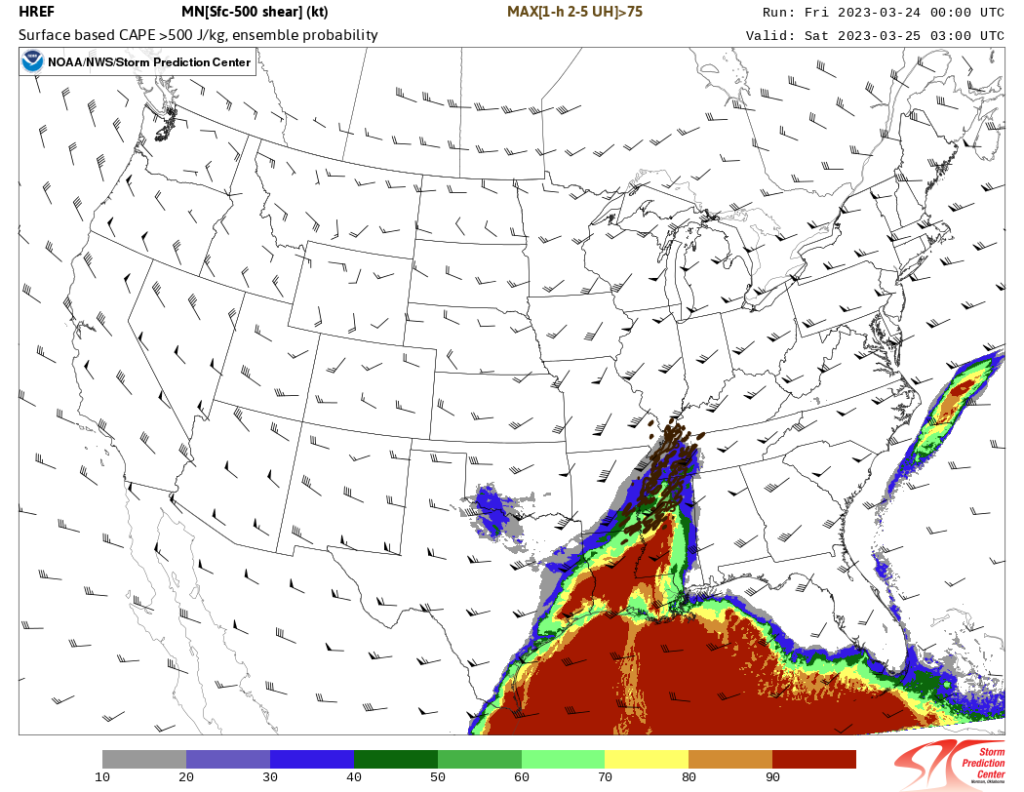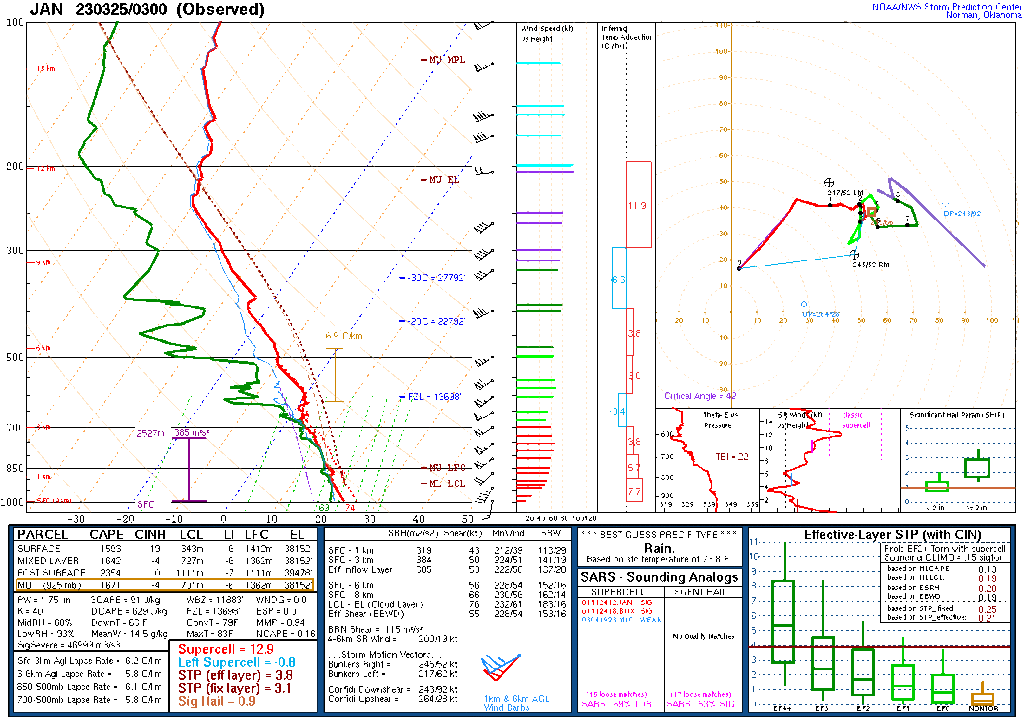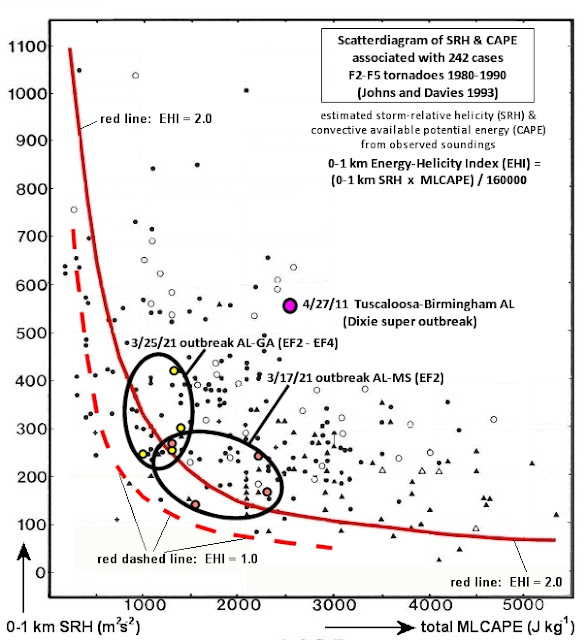A quick and very unorganized collection of data & photos from the devastating tornadoes that struck after dark on March 24. As of 9 a.m. on the 25th, at least 23 are dead.
Large-scale environment
Even in model runs from Thursday night (24 hours before the event), there was high confidence of sufficient CAPE and shear for organized storms in west and southwest MS — with the favorable environment expected to translate eastward as the night went on.

With considerable veering in the typical tornado-bearing layer.

Weather balloon launched in Oak Grove, MS, while the first non-tornadic supercell was moving through central MS, but before the tornadic storms developed:
Thanks to the staff at WFO-Jackson, we have data from a very rare 3Z sounding. With an EHI greater than 3, this environment lands squarely in a parameter space for large, damaging, deadly tornadoes. The second image below is a set of F2-F5 tornado cases collected by Jon Davies.


Storm structure
At Rolling Fork, the radar presentation of strong rotation and debris lofted high into the atmosphere suggested a violent tornado. We’ll wait for the damage survey to confirm:
Matt saved this velocity data showing the development of the third tornado (Amory / Smithville):
(Added…) And Sam’s statistical analysis of the Amory storm’s radar/debris signature:
A view from infrared radar of the first tornadic storm, and also the supercell that had already developed and moved north of Jackson (no tornado there, though).
Damage
Nighttime damage photos usually don’t give you a sense for how bad the damage really is, but they are our first quick look:
Photos the next morning provide the real clarity:
And a drone view, from the morning after: